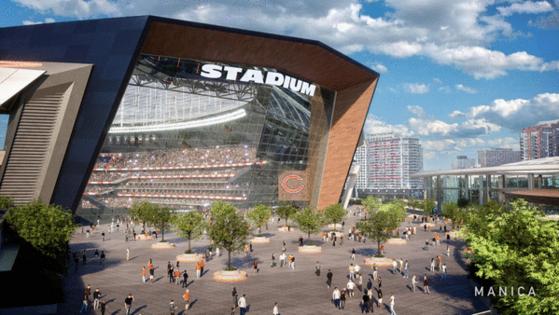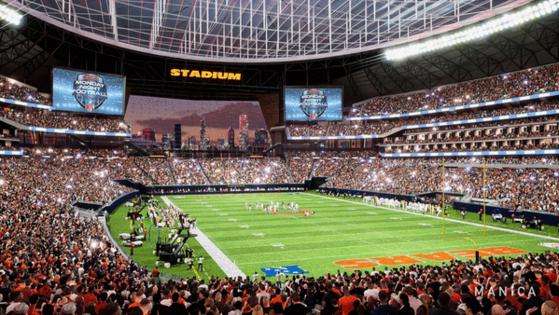Chicago Bears' lakefront stadium proposal: What's been said, what we know -- and what we need to know
Published in Football
CHICAGO — A billion here, a billion there — pretty soon you’re talking real money. The late Sen. Everett Dirksen may not have said exactly that, but he repeatedly raised that concern about spending tax dollars.
For reference, $1 billion is more than the budgets of the Chicago Park District, Cook County Forest Preserves and Greater Chicago Food Depository combined. Annual spending for Chicago police is about $2 billion, while Chicago Public Schools’ budget exceeds $9 billion.
Now, Illinois politicians are faced with the Chicago Bears’ request to build a new, publicly owned $3.2 billion enclosed stadium on Chicago’s lakefront. The state’s top leaders expressed reluctance, but Chicago Mayor Brandon Johnson is all in.
So what exactly is proposed, what else is at stake, and how will this play out? Here are a few highlights.
What is proposed
Bears President and CEO Kevin Warren envisions a stadium just south of the Bears’ current home at Soldier Field, on the site of what is now a parking lot. The facility would seat about 65,000 for football, with standing room up to 70,000, and a capacity of 77,000 for basketball.
The structure would have a fixed, translucent roof, and a glass wall on the north end to take in the skyline. Unlike Soldier Field, it could hold events year-round, including concerts, soccer, college basketball playoffs, or, once in a great while, the Super Bowl.
Soldier Field would be torn down, but its colonnades would be saved and 14 acres of athletic fields and open space added in between and to the north of the colonnades, for use by local sports teams, graduations and other events. If approved this year, the stadium would open in 2028.
A little context
The stadium would be designed by Manica architects, which designed Allegiant Stadium in Las Vegas. That stadium, referenced by the Bears in their presentation, also has a translucent roof, and opened in 2020 at a cost of $1.9 billion, with $750 million from taxpayers.
...continued
©2024 Chicago Tribune. Visit chicagotribune.com. Distributed by Tribune Content Agency, LLC.










Comments